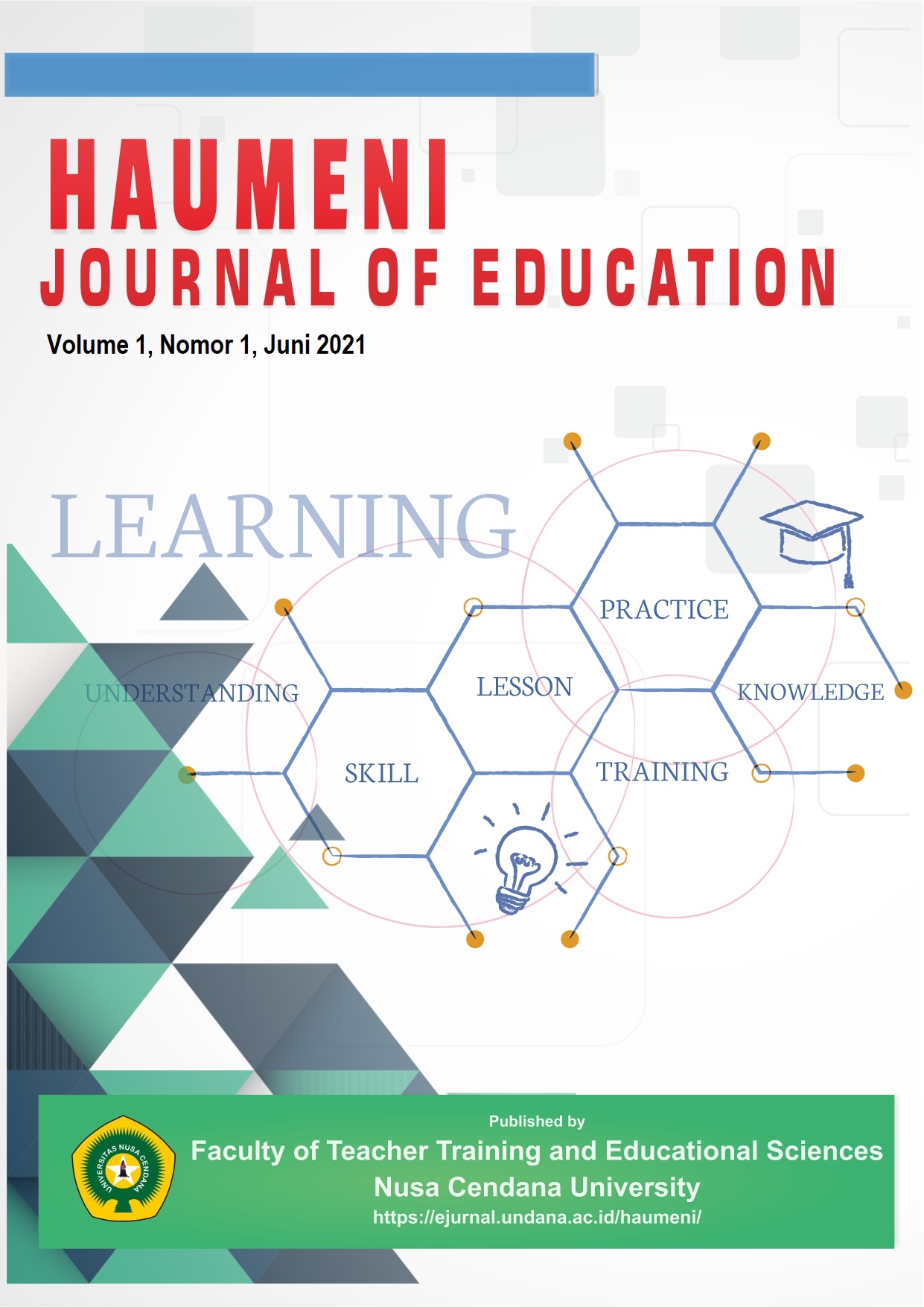Ethnobotany of Medicinal Plants for Internal Diseases in the Village Community of Fatulotu of Lasiolat District of Belu Regency
Abstract
ABSTRACT: this research aims to study kinds of plants that have medicinal properties, traditional ways to use the plants as traditional medicinal ingredients, and traditional rituals performed in curing internal diseases in the Fatulotu village community of Lasiolat district of Belu regency. This research was carried out between October and November 2013 in the Fatulotu village community of Lasiolat district of Belu regency. The method of this research is field observation. Data were collected by survey and interview tecnique. Survey tecnique is used to obtain data about the kinds of plants that have medicinal properties. While, interview tecnique is used to obtain data about the rituals performed in healing internal diseases. The results showed that there were 22 species of plants that have medicinal properties that could be group into 16 plant families and could cure 16 kinds of internal diseases. The ways of processing plants to be used as traditional medicine ingredients varies depending on the types of diseases. Shaman is accompanied by several villagers performing rituals when taking natural materials. The rituals are carried out in the form of certain treatments on the plants and the recitation of spells by shaman.
Downloads
References
Swansi, S dkk. (1990). Pola-pola pengobatan tradisional pada masyarakat pedesaan daerah Bali. Jakarta: Departemen Pendidikan dan Kebudayaan.
Suryadarma, IGP. (2008). Diktat Kuliah Etnobotani. Diakses tanggal 11 februari 2013. http://staff.uny.ac.id/.../diktat%20etnobotani.pdf.
Lutfiyya, M. N., Henley, E., Chang, L. F., and Rayburn, S. W. (2006). Diagnosis and treatment of community-acquired pneumonia. America: American Academy of Family Physicians.
Corrao, J. M., et al. (1990). Coronary heart disease rissk factors in women. Canada: Heart and Stroke Foundation.
Arukwe, U., et al. (2012). Chemical composition of persea americana leaf, fruit, and seed. Nigeria: IJRRAS.
Kavi, L. (2013). Living with low blood pressure: understanding the medical jargon and tips on how to cope with low BP. United kingdom: STARS Published.
Kuete, V., et al. (2011). Antimicrobial activities of the methanol extract and compounds from artocarpus communis (Moraceae). Cameroon: Departmen of Biochemistry, Faculty of Science, University of Dschang.
Hiswani. (2004). Tuberkolosis merupakan penyakit infeksi yang masih menjadi masalah kesehatan masyarakat. E-USU Repository: Universitas Sumatera Utara.
Adams, M. (2007). The Aloe vera miracle: a natural medicine for cancer, cholesterol, diabetes, inflammation, ibs, and other health conditions. Arizona, USA: Truth Publishing International, Ltd.
Rengganis, I. (2008). Diagnosis dan tata laksana asma bronkial. Majalah Kedokteran Indonesia. Jakarta: Fakultas Kedokteran Universitas Indonesia.
Patil, M. V., and Jadhav, R. L. (2011). Use of phyllanthus reticulatus fruit extract as a natural indicator in acid basa titration. International Journal of Pharmacy and Pharmaceutical Sciences.
Sharma, S., and Kumar, S. (2013). Phyllanthus reticulatus poir – an important medicinal plant: a review of its phytochemistry, traditional uses and pharmacological properties. International Journal of Pharmaceutical Sciences And Research.
Andayasari, L. (2011). Kajian epidemologi penyakit infeksi saluran pencernaan yang disebabkan oleh amuba di Indonesia. Media Litbang Kesehatan.
Srinivas, K., and Baboo, R. V. V. (2011). GC-MS Study of Schleichera oleosa (Lour) Oken. International Journal Of Current Pharmaceutical Review And Research.
Al-Attar, A. M. (2011). Protective effect of avicennia alba leaves extract on gastric mucosal damage induced by ethanol. Research Journal of Medicinal Plant
Fashner, J., and Gitu, A. C. (2015). Diagnosis and treatment of peptic ulcer disease and h. pylori infection. Residency, Lee Memorial Health System, Fort Myers, Florida. Florida. Florida State University College of Medicine Family Medicine.
Taylor, L. (2005). Technical Data Report For Graviola (Annona muricata). Austin: Sage Press Inc.
Septadina, I. S., dan Veronika, F. (2015). Gambaran histopatologi epitel transisional kolorektal pada pasien hemoroid. Jurnal Kedokteran dan Kesehatan, 2(1), 85 – 91.
Ganz, R. A. (2013). The evaluation and treatment of hemorrhoids: a guide for gastroenterologist. Minnesota Gastroenterology PA, Plymouth, Minnesota. Clinical Gastroenterology And Hepatology 2013; 11: 593 – 603.
Nelson, S. C. (2003). Morinda citrifolia l.: rubiaceae (rubioideae) coffee family. University of Hawai’i at Manoa, College of Tropical Agriculture and Human Resources, Department of Plant and Environmental Protection Sciences. USA. Permanent Agriculture Resources.
Blanco, Y. C., et al. (2006). The noni fruit (morinda citrifolia l.): a review of agriculttural research, nutritional and therapeutic properties. Journal of Food Composittion and Analysis, 19 (2006) 645 – 654.
Rivera, A., et al. (2012). Bioactive constituents in ethanolic extract leaves and fruit juice of morinda citrifolia. Annals of Biological Research, 3(2), 1044 – 1049.
Kania, N. (2007). Penatalaksanaan demam pada anak. Bandung. Makalah Seminar yang Disampaikan Pada Acara Siang Klinik Penanganan Kejang Pada Anak

 Mario Justinianus Santrum(1*)
Mario Justinianus Santrum(1*)










